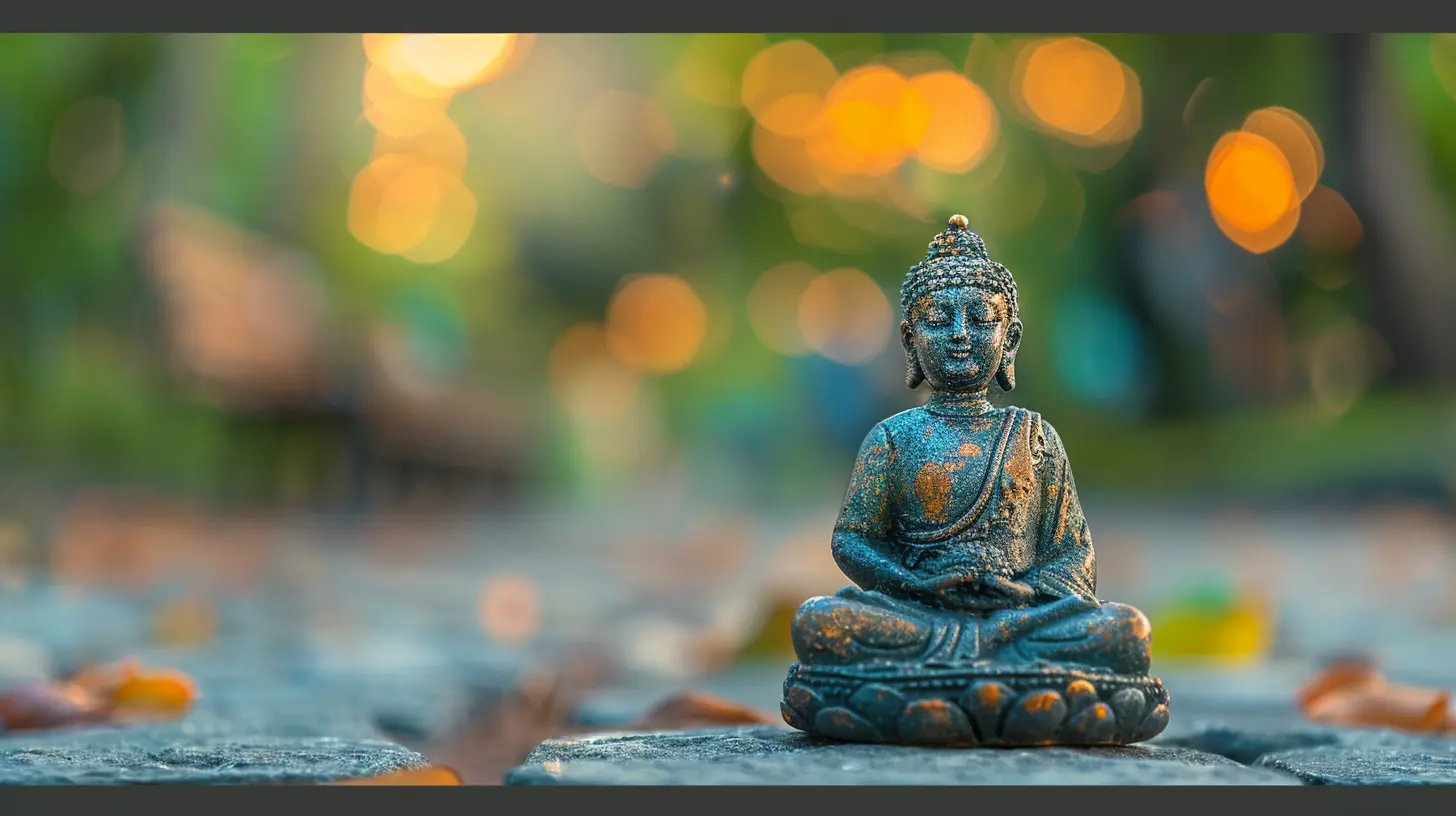Harnessing the Power of Meditation for Mental Clarity
21 September 2025
Let’s put it out there—life is loud. Constant notifications, multi-tasking, and never-ending to-do lists can turn your brain into a browser with 47 tabs open. If your thoughts feel scrambled, your attention span is shot, and you're riding the stress wave on a daily basis, you're not alone. Now, what if I told you the antidote to all that mental noise is something as simple as sitting still and breathing?
Yep, we’re talking about meditation.
This isn’t about chanting mantras on a mountaintop (unless that’s your thing). It’s about tapping into a proven, powerful tool that can declutter your mind, reset your focus, and bring back that long-lost sense of calm. This guide is your deep dive into how to start harnessing the power of meditation for mental clarity—and no, you don’t need to be a monk to get started.
What Is Meditation Really?
Let’s strip away the mystique. Meditation is basically mental training. Just like exercise improves your body, meditation strengthens your mind. It's the practice of focusing your attention and eliminating the constant chatter that fills your brain. That’s it.There are different types of meditation—mindfulness, transcendental, focused attention, loving-kindness—but at their core, they all serve one purpose: to help you become more aware and less reactive. Think of meditation as training the mind to stay in the now, instead of stress-hopping between the past and future.
Why Mental Clarity Matters More Than Ever
Okay, so what even is mental clarity?In simple terms, it's that crisp feeling when your thoughts are organized, your focus is laser-sharp, and you're not mentally drained by noon. You can think clearly, make better decisions, and sidestep unnecessary stress. We all want it. Few of us have it.
Thanks to info overload and constant mental stimulation, our clarity often gets clouded. And without clarity, we spiral—hello anxiety, poor sleep, low productivity, and burnout. Meditation punctures that fog. It’s like using Windex on the dirty window of your brain.
Science Backs It Up: Meditation Changes Your Brain
Still feeling skeptical? Let’s talk science.Regular meditation actually rewires your brain. Neuroscientific studies have shown that long-term meditators have:
- A thicker prefrontal cortex (the part responsible for decision-making and focus),
- Less activity in the amygdala (the brain’s fear and stress center),
- More connectivity in regions linked to attention and emotion regulation.
Translation? More chill, less panic. More focus, less noise.
And you don’t need to meditate for hours. Just 10 minutes a day can make a measurable difference over time. It’s like compound interest for your mental well-being.
How Meditation Clears Mental Clutter
Let’s get into the nitty-gritty: How exactly does sitting still and doing "nothing" clear up the chaos in your head?1. It Gives You Space from Your Thoughts
When you're stuck in overthinking mode, your thoughts are like rush hour traffic—honking, crowding, and going nowhere fast. Meditation gives you bird’s-eye perspective. You start realizing that you are not your thoughts; you’re just the observer. And that shift is huge.2. It Improves Focus and Concentration
Ever read the same sentence five times and still not know what it says? That’s a focus fail. Meditation trains your attention like lifting weights for your brain. It helps you stay on one thought instead of bouncing around like a caffeinated squirrel.3. It Reduces Stress and Anxiety
Meditation activates the parasympathetic nervous system—your “rest and digest” mode. That means lower cortisol, improved heart rate variability, and a calm mind that’s actually ready to problem-solve (instead of panic).4. It Enhances Emotional Intelligence
We all deal with emotional curveballs. Meditation helps create space between the trigger and your reaction. You don’t lose it when someone cuts in line or when your boss sends that “Can we talk?” email. You breathe. You pause. You respond, not react.A Meditation Toolbox: Finding What Works for You
There’s no one-size-fits-all when it comes to meditation. You just need to find what clicks with your vibe.✨ Mindfulness Meditation
This is the most popular type and super beginner-friendly. You focus on your breath, sensations, or even sounds—anything that anchors you to the present moment. Thoughts will come. That’s okay. Just notice them and gently return to the breath.Great for: Stress relief, anxiety, increasing awareness
🔁 Mantra Meditation
You repeat a word, sound, or phrase (like “Om” or “I am calm”) silently to stay centered. It’s a simple but powerful way to focus your mind.Great for: Deep relaxation, focus, mental stability
🧘♂️ Guided Meditation
Someone else does the talking. Perfect if your mind wanders a lot. You can find these on apps, YouTube, or Spotify. Just pop in some earbuds and let the guide lead you.Great for: Beginners, sleep, visualization
💗 Loving-Kindness Meditation
You focus on sending love and compassion—to yourself first, then others. It’s like giving your soul a warm hug. Sounds cheesy, but it works wonders for emotional healing.Great for: Self-love, forgiveness, empathy
How to Start a Meditation Practice Without Losing Your Mind
Let’s be real. Starting anything new can feel awkward. Meditation’s no different. But like brushing your teeth, it becomes second nature with repetition.Here’s a super simple starter guide:
1. Set a Timer
Start with just 5–10 minutes. Use an app or your phone—nothing fancy.2. Find a Quiet Space
Somewhere you won’t be interrupted. Sit comfortably—on a chair, cushion, or even your bed.3. Close Your Eyes and Breathe
Focus on your breath. In through the nose, out through the mouth. Feel the sensation.4. Your Mind Will Wander—Let It
Don’t fight it. Just notice when your mind drifts and gently bring it back. No judgment.5. End Slowly
Blink your eyes open, stretch a little, and notice how you feel. That’s it.Consistency beats intensity. It'll feel pointless at first—like “Am I doing anything?” But give it time. Clarity builds quietly, like clouds parting after a storm.
Making Meditation Stick: Building a Habit That Lasts
You don’t need to meditate for hours. You just need to make it regular.Here’s how to make meditation a daily (survivable) habit:
📅 Anchor It to a Routine
Habit-stacking works wonders. Meditate after brushing your teeth, before coffee, or after your evening Netflix binge. Link it to something you already do.📲 Use Apps to Guide You
Apps like Headspace, Calm, Insight Timer, or Balance are perfect for beginners. They keep you on track, offer guided sessions, and even give you virtual badges (yes, we all love those).📏 Track Your Progress
Keep a little journal or use the app’s tracker. Noticing how your mood or focus improves will keep you motivated.🧠 Remind Yourself Why You Started
Write a sticky note with your “why.” Maybe it's to reduce anxiety, maybe it's to sleep better, or just not snap at your coworkers. Keep that reminder visible.Real Talk: What Meditation IS and ISN’T
Let’s bust some myths.- ❌ Meditation is NOT about having zero thoughts
✔️ It’s about noticing the thoughts, not wrestling with them.
- ❌ Meditation doesn’t “fix” feelings instantly
✔️ It helps you understand and ride them instead of drowning in them.
- ❌ You don’t need to sit cross-legged on a cushion
✔️ You can lie down, stand, or even walk. No rules.
- ❌ It’s not only for spiritual people
✔️ CEOs, athletes, and students meditate. Mental clarity is universal.
The Unexpected Benefits of Mental Clarity
Sure, meditation calms your mind. But wait—there’s more.- 🔥 Higher productivity (less time wasted doomscrolling)
- 🧠 Better memory
- 💡 More creativity
- ❇️ Stronger decision-making
- 😴 Deeper sleep
- 🤝 Improved relationships (you listen better, argue less)
Your mind becomes like a decluttered room—easy to move through, peaceful to be in. Who wouldn’t want that?
Final Thoughts: Meditation Is Mental Hygiene
You brush your teeth daily, right? Not because they’re dirty, but because you want to keep them clean. Meditation is the same—it’s hygiene for your mind.Even ten intentional minutes of stillness can be the difference between chaos and clarity, between reacting and responding, between burnout and balance. It doesn’t require money, fancy gear, or hours of your day. Just you, your breath, and a little willingness to pause.
So, if your mind feels like a browser with 47 tabs open, try closing a few. Start with one breath. One moment. One sit.
Mental clarity awaits.
all images in this post were generated using AI tools
Category:
Mental ClarityAuthor:

Ember Forbes
Discussion
rate this article
1 comments
Raegan Reynolds
This article effectively highlights meditation's potential to enhance mental clarity, yet it could further explore the varied approaches to meditation and their distinct impacts. Incorporating scientific research on neuroplasticity would also strengthen the argument, offering readers a deeper understanding of how meditation reshapes cognitive functioning over time.
October 15, 2025 at 4:28 AM

Ember Forbes
Thank you for your insightful feedback! I appreciate your suggestion to delve deeper into various meditation approaches and incorporate research on neuroplasticity—these ideas will certainly enhance future revisions.


